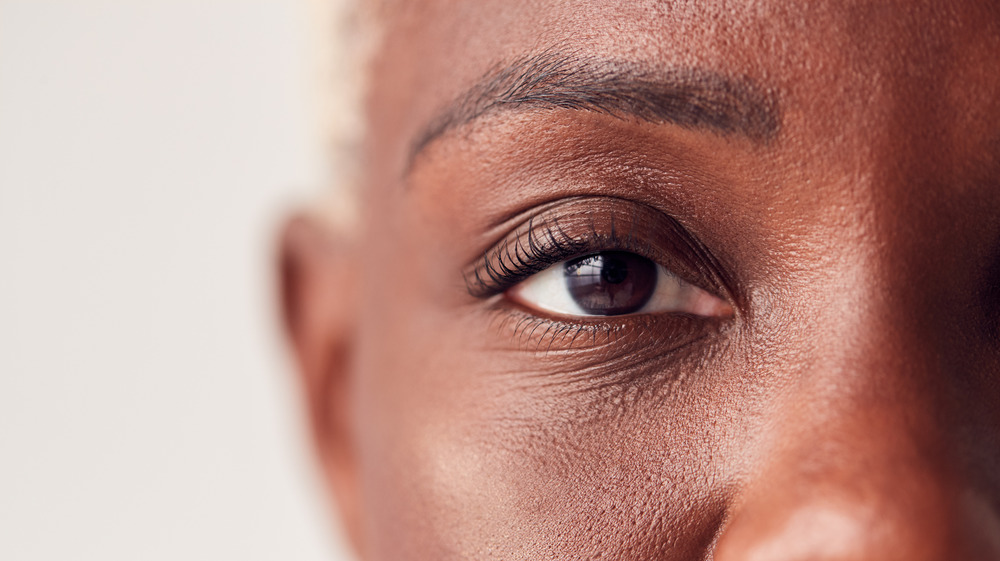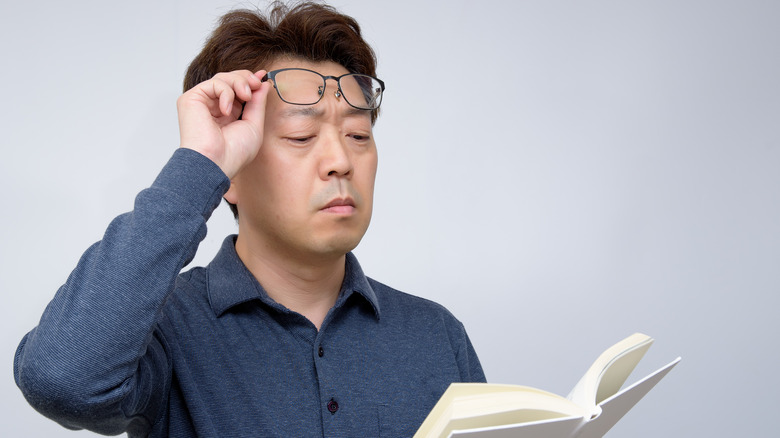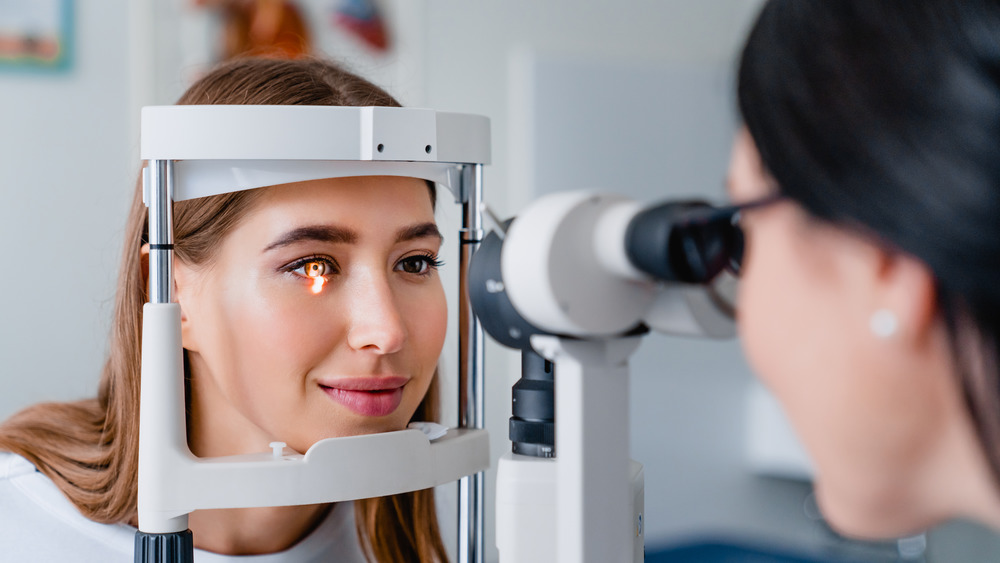The Real Reason Not Everyone Can Unfocus Their Eyes
If you've never tried to unfocus your eyes, go for it. Focus on something a few feet away and then slowly let your vision go blurry. Many people learn the skill in childhood as one technique for viewing stereograms (also known as "Magic Eye Images"). Other people learn the ability to unfocus eyesight after they catch themselves daydreaming and want to replicate the way everything looks right before they snap out of it.
Unfocusing your eyes can put a sort of soft haze on the world, but not everyone has the ability to unfocus their eyes. It makes stereograms next to impossible, but for someone who can't unfocus their eyes, that's the least of their concerns.
Some people have esotropia which is also known as "a lazy eye," according to Brown University. This is when one eye seems to turn inward toward the nose. The American Association for Pediatric Ophthalmology and Strabismus states that children suffering from this form of strabismus — meaning any condition where the eyes don't align — can lose their 3-D vision, the ability for both eyes to work together, or all vision in the eye that is "lazy."
Esotropia is usually diagnosed in childhood, but that doesn't mean that the ability to unfocus your eyes is guaranteed as an adult. Adults in middle age can lose the ability to focus or unfocus their eyes. According to the American Academy of Ophthalmology this common experience is known as presbyopia. It's why many adults end up with reading glasses.
Symptoms and causes of presbyopia
As Healthline explains, presbyopia is not necessarily a disease but a condition that affects everyone as they and their eyeballs begin to age. Starting around age 40, symptoms of presbyopia may begin to occur, and you may find that it becomes more difficult to clearly see things up close or read a newspaper or book without difficulty. Besides a general decrease in your ability to focus on anything up close, you may find that you are squinting more often, require brighter light when reading, or you may experience a headache after trying to read any small print, per Healthline.
Although the overall cause of presbyopia can be attributed to aging, it specifically has to do with the lens of your eye. When light passes into your eye and hits the lens, the lens flexes and changes to direct the light towards the back of your eye, allowing it to perceive the shape or object you are focused on (via Healthline). As you get older, however, the tiny muscles that allow your lens to change become less flexible, and your lens has a harder time directing the light into the back of your eye.
The root of the problem
The ability to focus and unfocus have one important aspect in common: They affect the function of ciliary muscles. According to the Encyclopedia Britannica, these muscle fibers are absolutely key when it comes to focusing and unfocusing our eyes. The muscles relax when we look at things far away and contract when we focus our eyes up close.
Our eyes usually adjust to focus on whatever we turn our attention to. But when it comes to stereograms, eye exams, and even 3-D movies, we may want to change our focus. And that's where these issues are most noticeable. Despite our best efforts, the cilia don't cooperate and our vision suffers as a result.
No matter the age at which it occurs, an inability to control eye focus means that the ciliary muscles aren't working properly. Whether you've always had trouble focusing your eyes or the trouble has just started, it is important to get to an eye doctor. Contacts and glasses can help while the doctor ensures there are no other issues.
Other reasons for not being able to unfocus your eyes
Another reason your eyes may have trouble focusing — or rather, unfocusing — may be due to a condition called accommodative dysfunction. This occurs when your eyes have trouble working together to focus and can be caused by poor lighting or not allowing your eyes to take a break, per the American Optometric Association (AOA). This can cause eye strain, blurry eyesight, headaches, and eye fatigue (via AOA).
According to the Optometrists Network, there are three types of accommodative dysfunctions: accommodative insufficiency, accommodative infacility, and accommodative spasm. People most often have accommodative insufficiency, which renders them unable to effectively see and focus on anything close up. Accommodative infacility occurs when you are not able to properly switch your focus from objects that are close up to objects that are far away. Accommodative spasms occur when the muscles that allow your eye to focus begin to twitch which causes your vision to blur. Treatments for accommodative dysfunction include special glasses or contact lenses, as well as vision therapy involving specialized eye exercises designed to strengthen your vision, per Optometrists Network.




